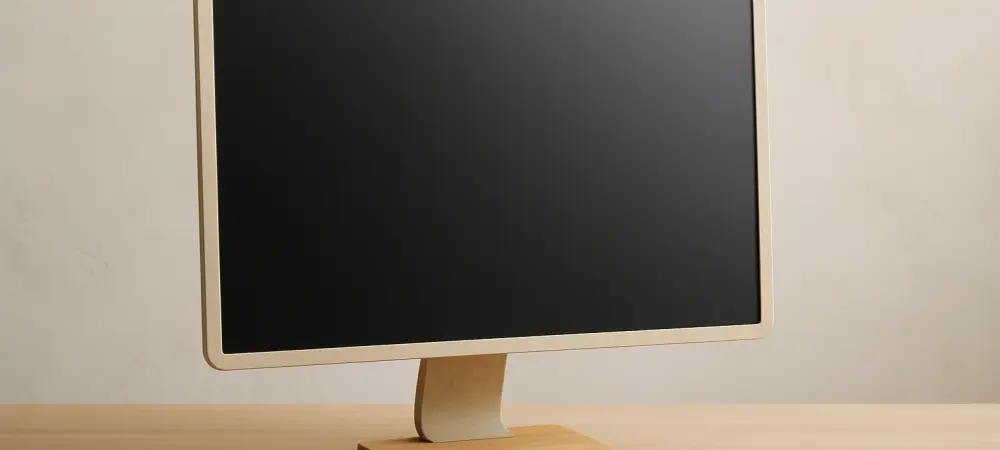I’m thrilled to sit down with Dominic Jainy, a renowned IT professional whose expertise in artificial intelligence, machine learning, and blockchain has positioned him as a thought leader in tech innovation. Today, we’re diving into a fascinating discussion about the ONE Monitor, a cutting-edge display that’s making waves with its minimalist design and sustainable features. We’ll explore the philosophy behind its sleek industrial look, the unique challenges of relying on a single USB-C connection, its eco-conscious construction, and how it fits into the evolving landscape of modern workspaces. Let’s get started!
How did the idea for the ONE Monitor’s minimalist design come about, and what inspired its industrial aesthetic?
I’ve always believed that technology should blend seamlessly into our lives, almost disappearing into the background. The inspiration for the ONE Monitor came from the idea of stripping away unnecessary complexity—both in form and function. We looked at industrial design principles, where raw materials and clean lines convey strength and simplicity, and applied that to create a monitor that feels like a natural extension of a modern workspace, not a clunky add-on.
What were some of the biggest challenges in balancing such a stripped-down design with practical functionality?
It was a tightrope walk. We wanted a device that looked elegant but still delivered on core needs. The toughest part was ensuring the monitor performed well without the traditional components like circuit boards or power bricks. Every decision, from the materials to the single USB-C connection, had to serve both the aesthetic vision and usability. We spent countless hours testing to make sure it wasn’t just a pretty face but a reliable tool for everyday tasks.
Can you elaborate on what sets the ONE Monitor apart from other displays currently available?
Absolutely. The standout feature is its reliance on a single USB-C cable for both power and display signal. Most monitors require multiple cables and external power sources, which clutter desks and complicate setups. By consolidating everything into one connection, we’ve created a seamless experience that’s visually and practically uncluttered. It’s a bold move away from the norm, prioritizing simplicity over excess.
Sustainability seems to be a core pillar of this monitor. How does it achieve such impressive energy efficiency?
One of the key ways is through its zero-consumption state when idle. Unlike traditional monitors that still draw power in standby mode, the ONE Monitor essentially shuts off its energy use when not active. This was a deliberate choice to address the growing concern over energy waste in tech. It’s a small change in the grand scheme, but when scaled across offices or homes, it can make a significant impact on overall consumption.
What materials and production methods did you prioritize to make the ONE Monitor over 90% recyclable?
We focused on using materials like aluminum and certain plastics that are widely recyclable and durable enough for long-term use. Over 90% of the monitor’s construction can be broken down and repurposed, which is huge for reducing e-waste. On the production side, we adopted lower-impact methods, such as minimizing energy-intensive processes and working with suppliers who share our commitment to sustainability. It’s about creating a product that’s kinder to the planet at every stage of its lifecycle.
Who do you envision as the primary users of the ONE Monitor, and how does it cater to their needs?
We see this monitor appealing to people who value simplicity and order—think programmers, writers, or anyone in shared or minimalist workspaces. Its plug-and-play setup is perfect for those who want to sit down, connect, and get to work without fiddling with cables or settings. It’s not about catering to everyone; it’s about solving specific pain points for users who prioritize a clean desk and an efficient workflow over bells and whistles.
Given its lightweight build, why isn’t the ONE Monitor marketed as a portable device?
While it’s light, portability wasn’t our goal. The ONE Monitor is designed as a full-sized desktop display with a sturdy stand meant for stationary use. We focused on optimizing it for static environments like offices or home setups where a permanent, clutter-free solution is needed. Making it truly portable would have required compromises in size or stability that didn’t align with our vision of a dedicated workspace tool.
How does the minimalist approach of the ONE Monitor impact its compatibility with different devices?
The minimalist design does come with trade-offs. Since it relies solely on USB-C with Power Delivery and DisplayPort Alt Mode, it won’t work with laptops or devices that don’t support those standards. There’s no HDMI fallback or alternative ports, which limits its audience. We knew this would be a sticking point for some, but it was a conscious decision to commit fully to a streamlined, future-focused connection standard.
In what ways does the ONE Monitor align with the trends you’re seeing in modern workspaces?
Modern workspaces, especially shared or transient ones, are moving toward flexibility and simplicity. The ONE Monitor fits right into that with its plug-and-play nature. You can walk into a shared office, connect it in seconds, and have a clean, functional setup without dragging along extra gear. It reflects a broader shift toward tech that adapts to fluid, collaborative environments rather than rigid, permanent setups.
What’s your forecast for the future of sustainable tech design in products like monitors?
I’m optimistic that sustainability will become a baseline expectation, not just a bonus feature. We’re already seeing more companies prioritize recyclable materials and energy efficiency, and I think that’ll accelerate as consumers demand greener options. For monitors specifically, I predict we’ll see even smarter power management and modular designs that make repairs and recycling easier. The challenge will be balancing those eco-goals with performance, but I believe the industry is up for it.

